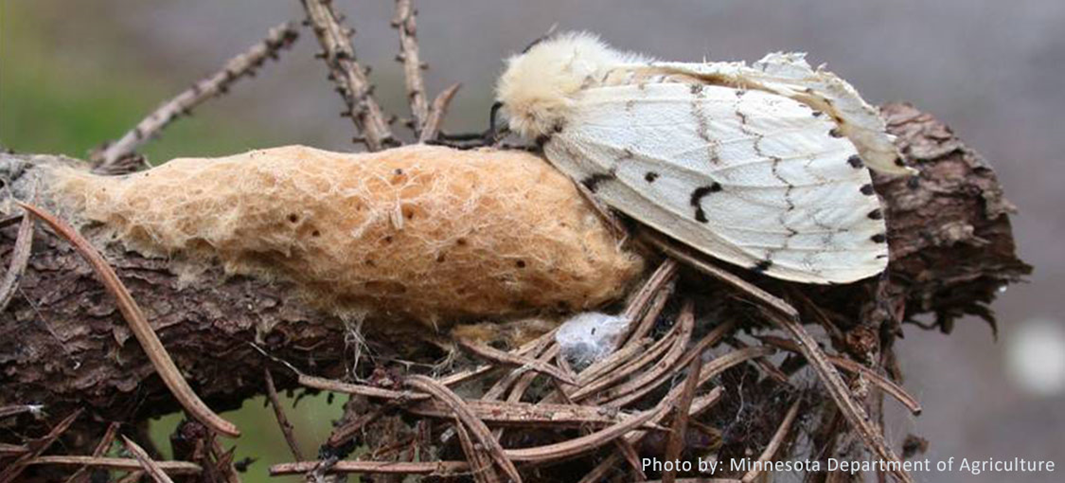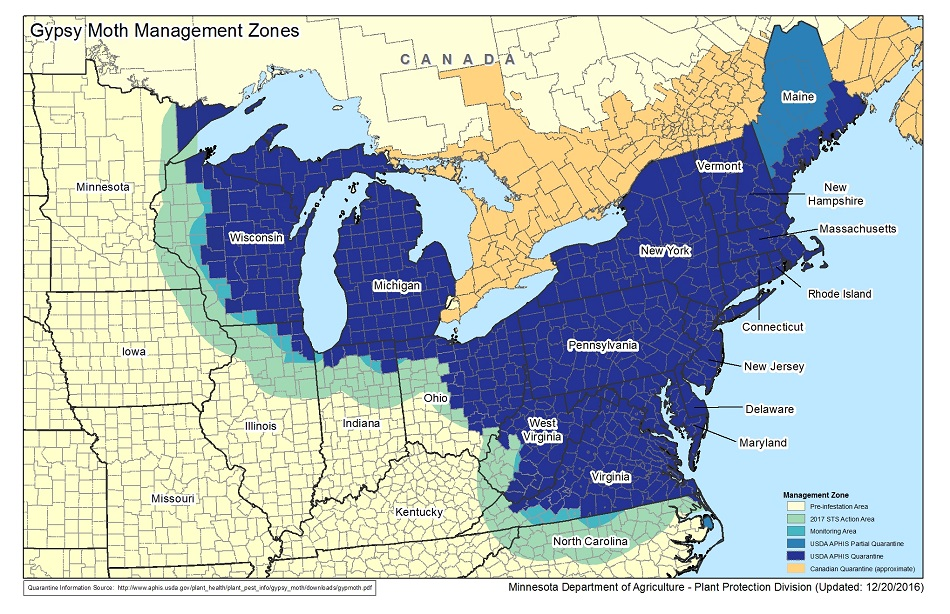New Name, Same Pest
Lymantria Dispar is an invasive moth formerly known by the common name Gypsy Moth. Last year, the Entomological Society of America officially changed the common name for this invasive species to the Spongy Moth. Romani people, Europe's largest ethnic group, generally consider the common name "Gypsy Moth" to contain a racial slur. The Entomological Society of America states that "while the use of an ethnic slur is enough reason to stop using a common name, the former common name was doubly inappropriate in that it linked a group of people who have been treated as pests and the targets of genocide with an invasive pest insect that remains targeted for population control and eradication, all of which combined to have dehumanizing effects for Romani people."
The new common name for Lymantria Dispar, the spongy moth, refers to the insect's light brown, fuzzy egg masses. This new name also aligns better with other countries common name for this invasive species. This moth is known for defoliating deciduous forests while in their caterpillar form. This repeated defoliation causes stress and can leave trees vulnerable to other diseases and pests. Spongy moths were introduced to the United States from Europe in the nineteenth century. They have spread from their initial location in Massachusetts westward, in both the United States and Canada.
Since 2004, Minnesota has been a member of the U.S. Forest Service's Slow the Spread (STS) program. Cook and Lake Counties are the only places with reproducing spongy moths in Minnesota. Parts of Eastern Minnesota are within the transition zone, and most of the state is still listed as an uninfested zone. Currently, Anoka County is still within the uninfested zone, but the spread of the spongy moth is occurring at a rate of 3 miles per year.

